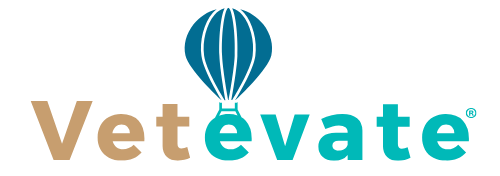One of the first and most obvious differences between veterinary job posting sites lies in their level of specialization. Some platforms cater exclusively to the veterinary industry, offering postings for veterinarians, veterinary technicians, assistants, hospital managers, and other related positions. These industry-specific sites are built to understand the unique demands of veterinary employment and provide tools and features designed with that professional environment in mind. In contrast, general job boards such as those that serve a wide range of industries often have veterinary positions buried among unrelated listings. While they may cast a broader net, they tend to lack the nuance necessary to effectively serve a veterinary audience.
Veterinary-specific job boards typically categorize roles in ways that are immediately relevant to job seekers. Categories like “small animal,” “large animal,” “exotic,” or “equine” care may be available as filters, and some sites go further by allowing users to search based on practice ownership opportunities, emergency medicine, internships, or even specific certifications. These targeted features are less common on general sites or even on some less-developed veterinary job boards, which may offer only basic filters or general geographic search capabilities. The more specialized platforms can offer a more curated and efficient experience for job seekers who already know what type of role or practice they’re aiming for.
Additionally, the level of industry involvement can differ greatly between platforms. Some veterinary job boards are directly affiliated with professional associations, veterinary colleges, or continuing education providers. These affiliations can enhance their reputation and visibility within the community, making them trusted spaces for both employers and job seekers. Others may be private, independent platforms with a commercial or corporate origin, which may or may not prioritize industry engagement beyond job listings. The credibility and reach of a site can be influenced by these affiliations, often making association-linked job boards the first stop for serious professionals.
Differences in Technology, Tools, and User Experience
Another major area where veterinary job posting sites vary is in the quality and sophistication of their technology. While all boards ultimately serve the same core function—connecting employers with job seekers—the ease, speed, and satisfaction with which they deliver that function can differ significantly. Some platforms offer advanced search filters, customizable alerts, mobile responsiveness, and user-friendly dashboards for managing applications or listings. Others are relatively basic, requiring more manual effort and offering fewer customization options for users.
For employers, the differences can be especially stark. On some job boards, creating a listing is a seamless process with templates, preview tools, and instant publication. Employers may be able to include multimedia such as photos or videos of their practice, and even create branded profiles to help attract candidates. Advanced platforms often provide applicant tracking systems, analytics, and communication tools to manage and evaluate responses effectively. In contrast, less sophisticated platforms may offer only a text-based form for job submission and rely on email for follow-up, making it harder to manage a large number of applicants or gain insight into a job posting’s performance.
For job seekers, user experience varies in how efficiently the platform helps them find relevant opportunities. Sites with intelligent algorithms can suggest jobs based on profile information, recent searches, or application history. Some may allow users to apply directly through the site, track their applications, and receive notifications when employers view their profiles. On other platforms, candidates may need to navigate off-site to apply, re-enter information repeatedly, or miss out on important updates due to lack of integrated communication. These differences can be the deciding factor for job seekers who are actively comparing where to focus their efforts.
Security and privacy features also vary. On top-tier job boards, users can control the visibility of their resumes, decide who can view their profile, and choose when and how they want to be contacted. Lesser platforms might not offer such controls, which can lead to irrelevant contact or even discomfort for job seekers who are conducting a discreet job search while currently employed. The degree of technological sophistication and user care built into the system speaks volumes about a site’s priorities and professionalism.
Pricing, Posting Options, and Employer Services
From the employer’s perspective, the pricing and structure of posting packages can differ greatly between veterinary job boards. Some platforms offer flat-rate pricing, while others use tiered plans based on job visibility, duration, or features such as being “featured” or prioritized. Additionally, association-backed job boards may offer member discounts or even include job postings as part of a broader membership package. Other platforms operate with premium models that include add-on services such as resume database access, enhanced branding, or hiring consultation.
Certain job boards offer short-term posting options or discounted rates for internships and entry-level roles, which can be ideal for practices seeking temporary or seasonal staff. Others may focus on long-term positions or high-level hires, offering strategic recruitment services, candidate pre-screening, and even recruitment advertising design. These enhanced services might come at a higher cost, but they can save time and increase the chances of finding a well-suited candidate. For larger hospital systems or corporate veterinary chains, platforms that offer these custom recruitment packages may be a better fit.
Furthermore, how postings are promoted varies between sites. Some job boards include email blasts to targeted groups of users, social media promotion, or placement in newsletters as part of their standard package. Others charge extra for any form of promotion beyond listing the job on the website. Visibility can be everything in competitive markets, and the level of exposure a job receives will vary based on the platform’s audience size, outreach channels, and the employer’s willingness to invest in promotional tools.
The availability of customer support can also be a point of distinction. A job board that offers live chat, phone support, or dedicated account managers provides a much higher level of service than one that relies solely on email communication or FAQ sections. Especially when time is tight or hiring is urgent, the ability to quickly reach a knowledgeable support team can be a key differentiator in choosing a job board.
Community Engagement and Added Value
Beyond the technical and pricing distinctions, veterinary job posting sites can differ in how they engage with and contribute to the broader veterinary community. Some platforms go beyond job listings and actively support professional development by offering webinars, blog content, newsletters, or access to educational resources. Others may host career fairs, virtual meetups, or employer spotlight events to connect candidates and clinics more directly. These offerings create an ecosystem of opportunity and support that encourages long-term user engagement, not just one-off job applications.
Additionally, community-focused platforms often maintain ongoing relationships with veterinary schools, professional organizations, and certification boards. These connections can help job seekers find roles that align with their training and licensure status, while also ensuring that employers reach candidates with up-to-date qualifications. By participating in the life of the profession, these job boards show a commitment to improving the industry, not just making placements. That sense of shared mission is an important value-added element for users who want to be part of something bigger than a single job search.
Some job boards may also emphasize wellness, inclusion, or diversity in the veterinary workplace. They might provide content or resources around managing work-life balance, preventing burnout, or advancing underrepresented professionals in the field. These additional layers of support and social responsibility help build trust and loyalty among users who seek a more holistic approach to career development.
In contrast, other platforms may exist strictly as transactional sites. While they can still serve a functional purpose, their lack of deeper connection to the veterinary profession might result in a less engaged user base or fewer high-quality listings. The differences in culture and community investment can significantly impact the user experience and the overall success of job searches or hiring campaigns.




